30 must-try foods and drinks in Japan

Foods to try in Japan
Sushi
With no doubt, sushi is the most famous Japanese food. The most often served as nigiri, sometimes hosomaki. If you have a chance, try fine dining sushi, omakase style, fast food conveyor belt sushi, as well as convenient stores for a full variety of experiences.
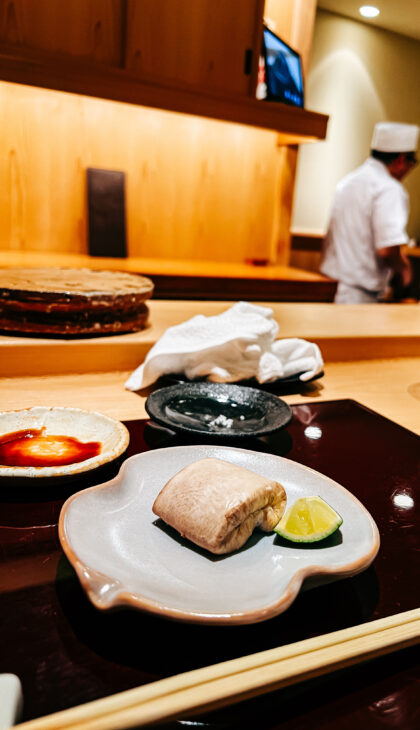
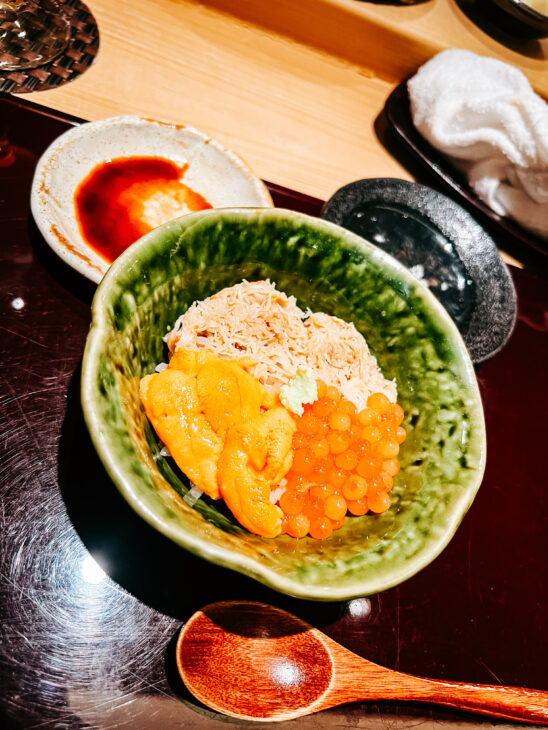
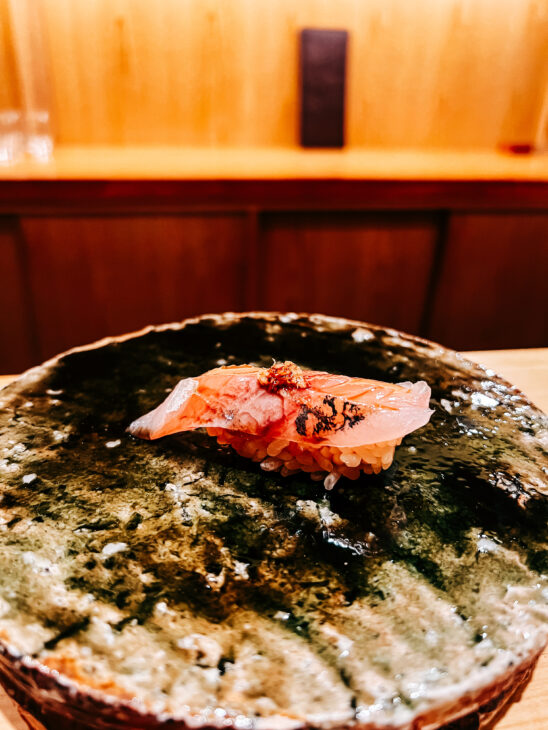
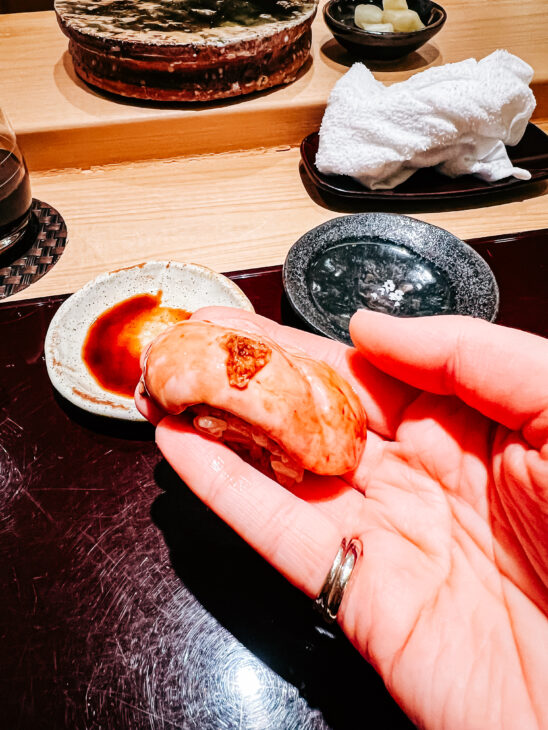
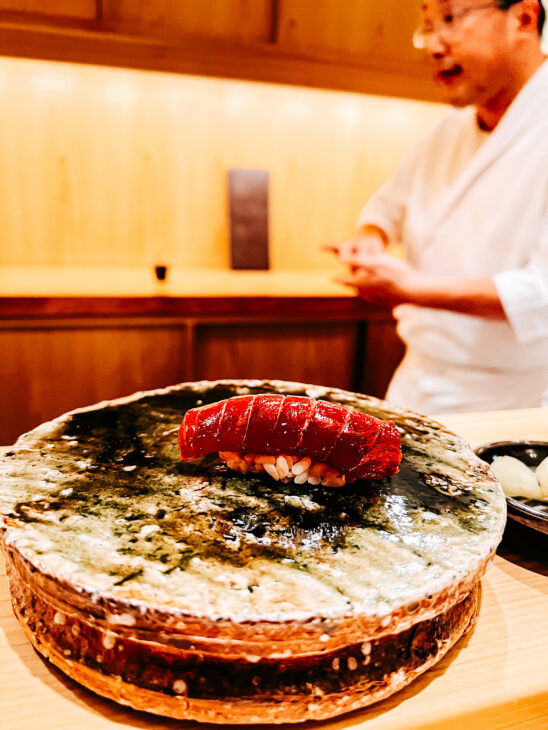
Sashimi
Sashimi is very common in Japan, especially in sushi restaurants and izakayas. It’s usually from raw fish, sometimes seafood served with soy sauce, wasabi, or salt.
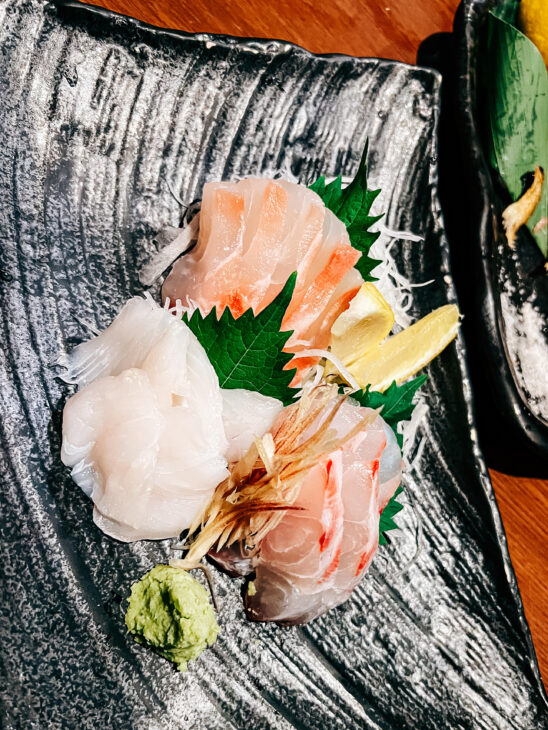
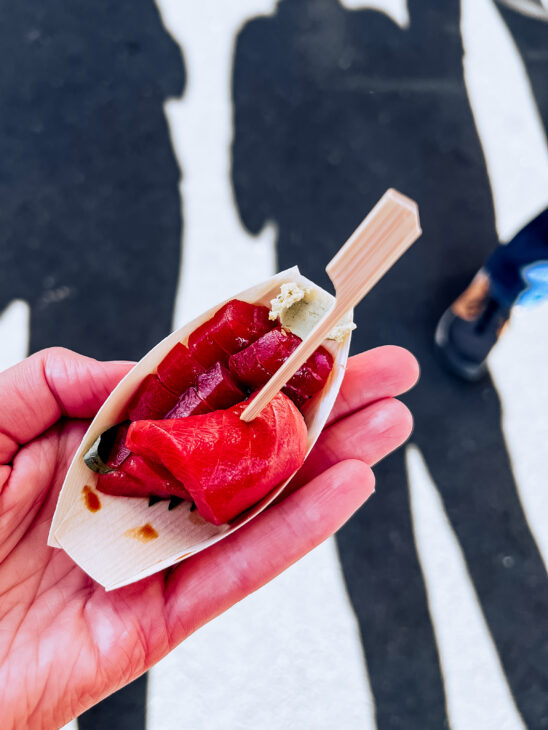
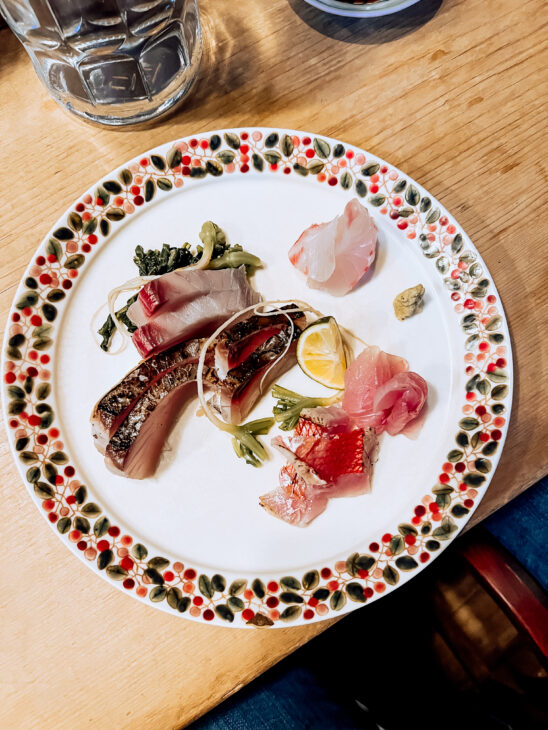
Unagi
Unagi is freshwater eel, grilled and bathed in sweet and salty sauce served with rice, sometimes also egg omelet. If you want to taste a small bite you can try it in Nishiki market. There is also a small shop, name, in Tokyo I wanted to try, but it was already sold out when we got there. I had my eel at the airport, which might not be the best place to try it, but it was tasty nevertheless.
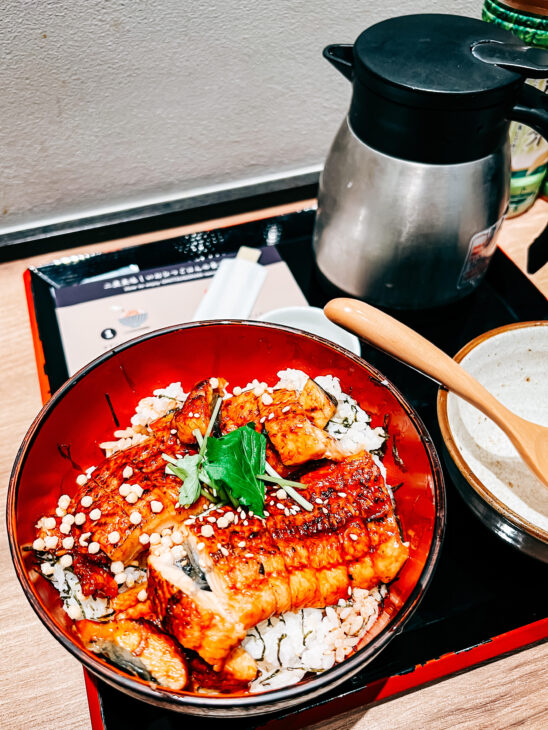
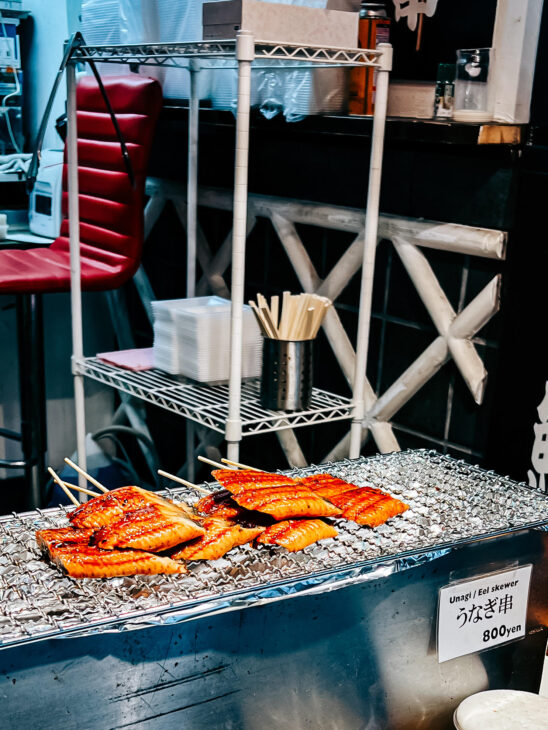
Fish cakes
Japanese fish cakes come in many forms—can be steamed or fried. We tried the street food version at Tsukiju Market in Tokyo.
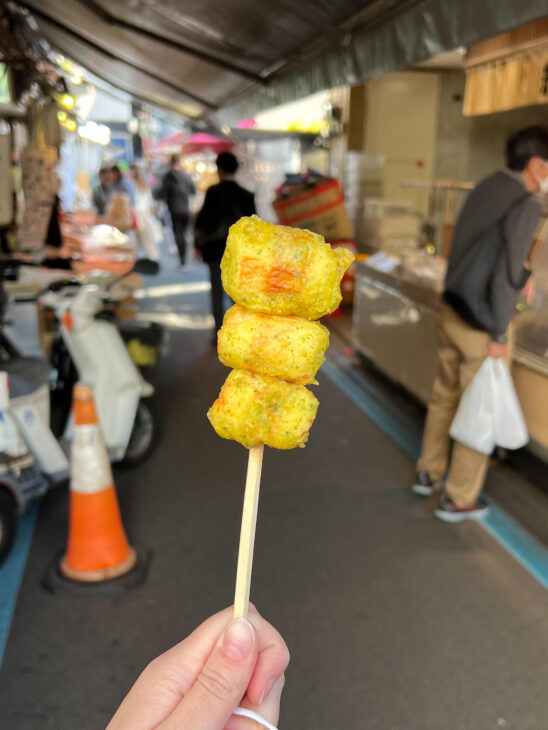
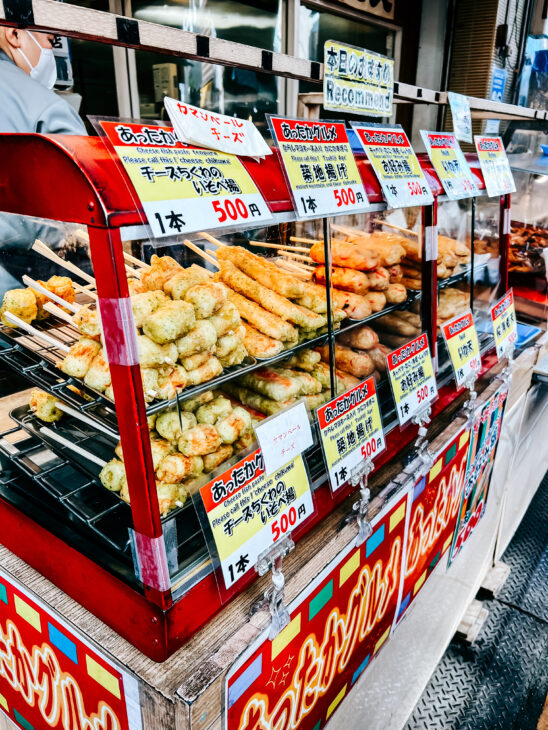
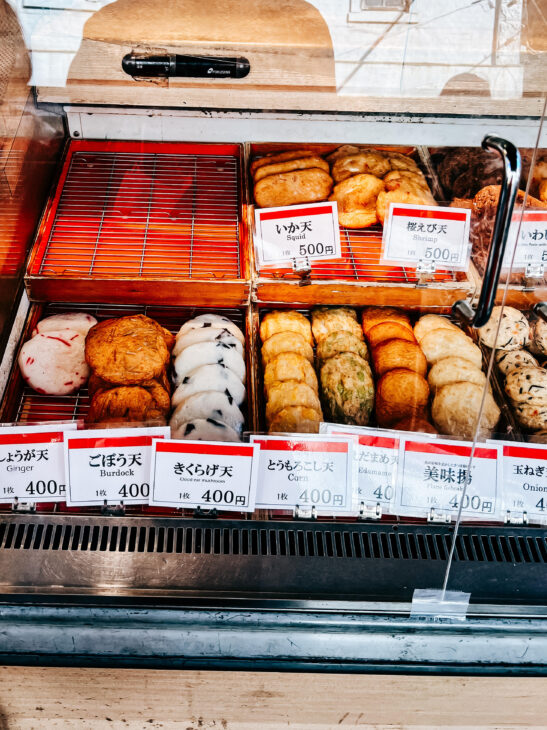
Soba
Soba are thin, buckwheat noodles served hot in a soup or cold with soya-based dipping sauce. In the soba specialty restaurant, the cold soba meal was fished with sobayu, and the water soba was cooked in. It’s thick from flour, you pour it into the rest of the dipping and enjoy hot, delightful soup.
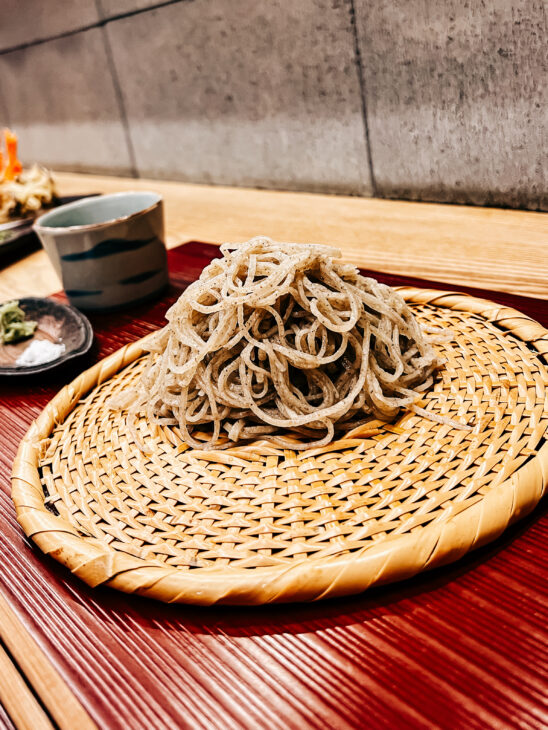
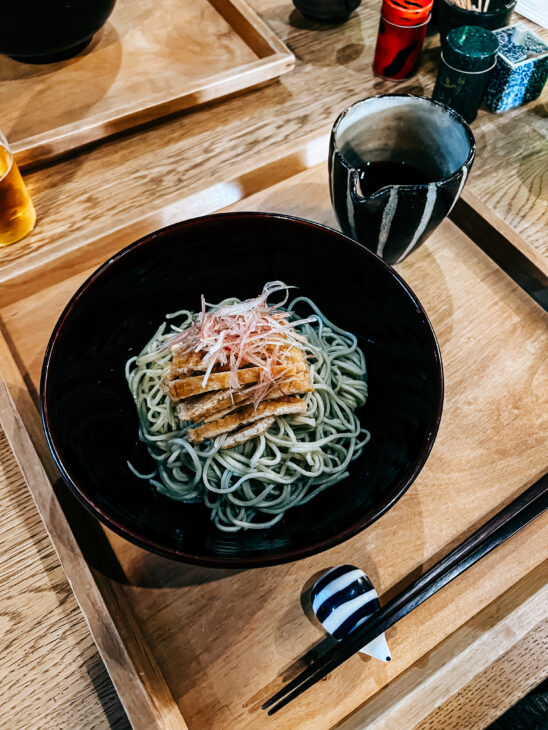
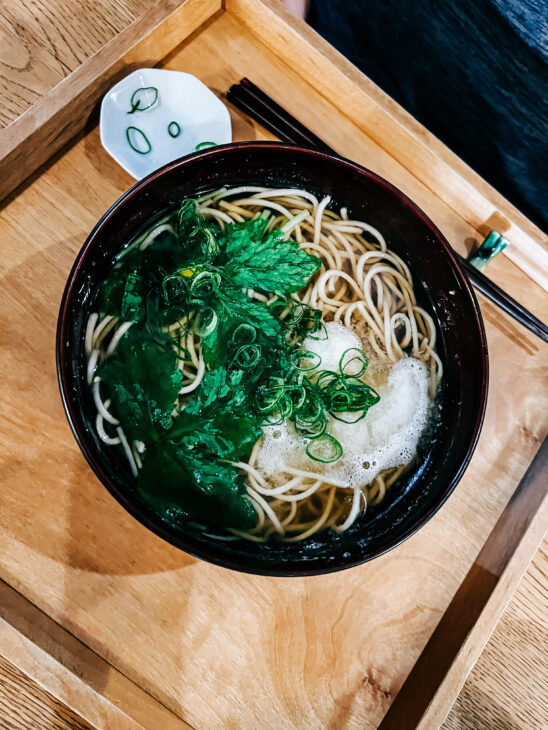
Udon
Thick noodles made from wheat flour, water, and salt, typically served in a simple dashi-based broth or stirred fried with meat or seafood. It’s a widely accessible, tasty, and cheap meal.
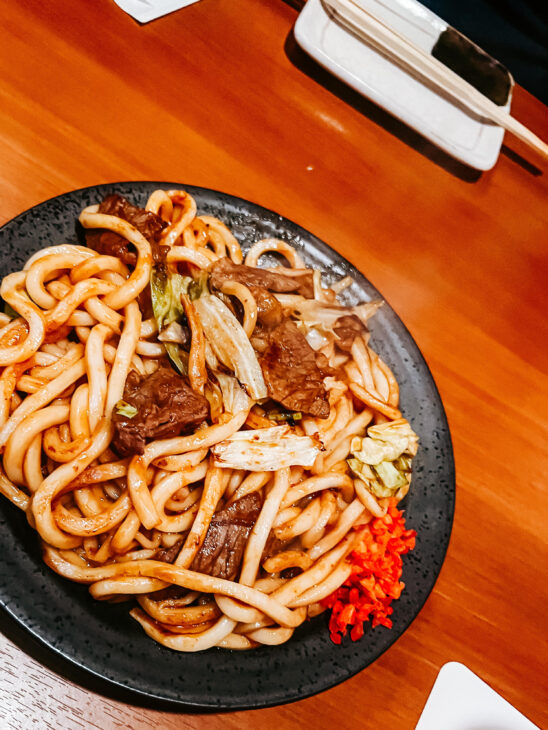
Ramen
Ramen is simply noodle soup made of rich broth, silky noodles, and different toppings. Originally the broth is meat-based, so finding a vegetarian option is not an easy task.
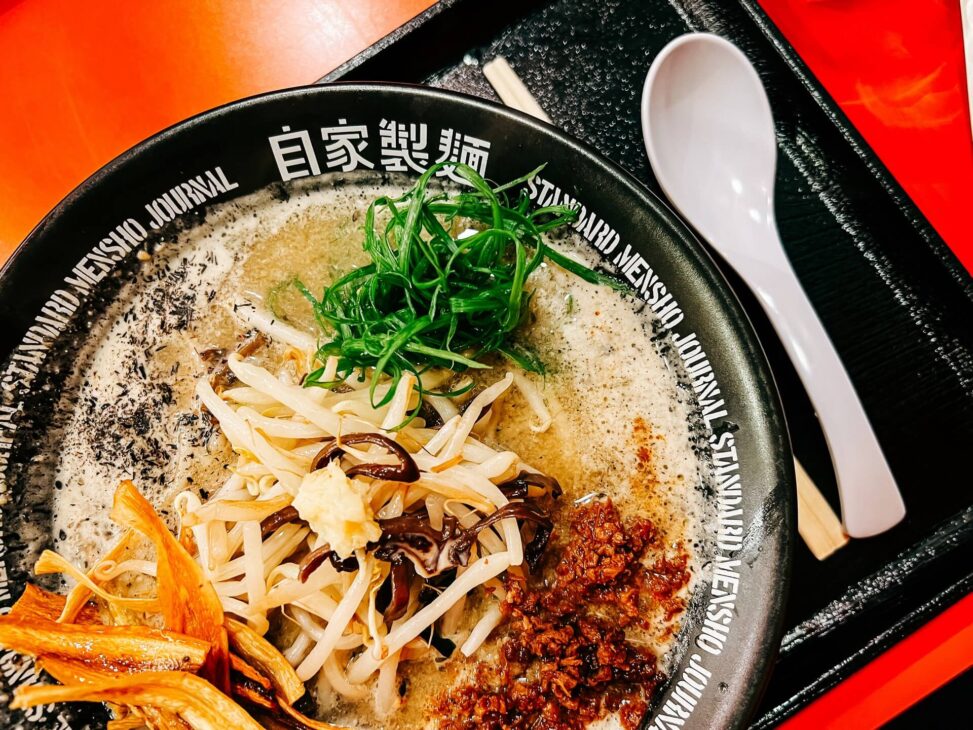
Gyoza dumplings
Although gyoza originated from China, it’s also popular in Japan. It’s usually filled with meat and vegetables, steamed or fried. I tried steamed Yuba (tofu skin) filled gyozas and fired sweet potato ones in Gyoza ChaoChao in Kyoto.
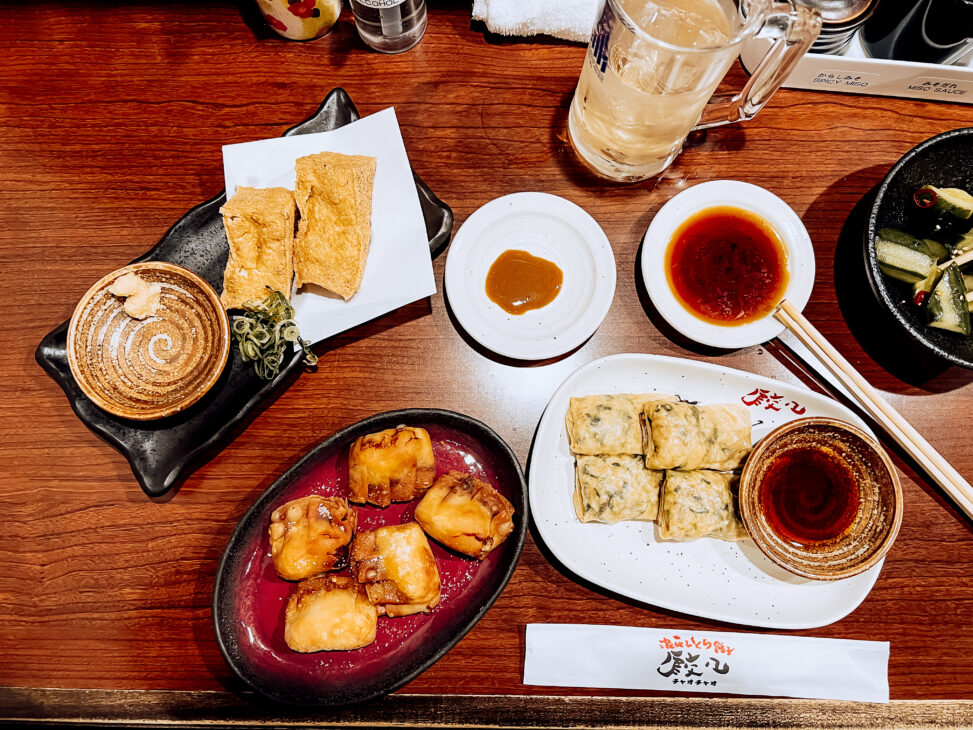
Tempura
Tempura is a cooking technique, which uses lightly battered, deep-fried seafood or vegetables. I’m a huge fan of this way of cooking, so I was on a mission to try various tempura meals in Japan. The most exquisite experience was the tempura specialty restaurant in Kyoto, Eishun. But the biggest surprise was the tempura egg I had a chance to eat at the airport.
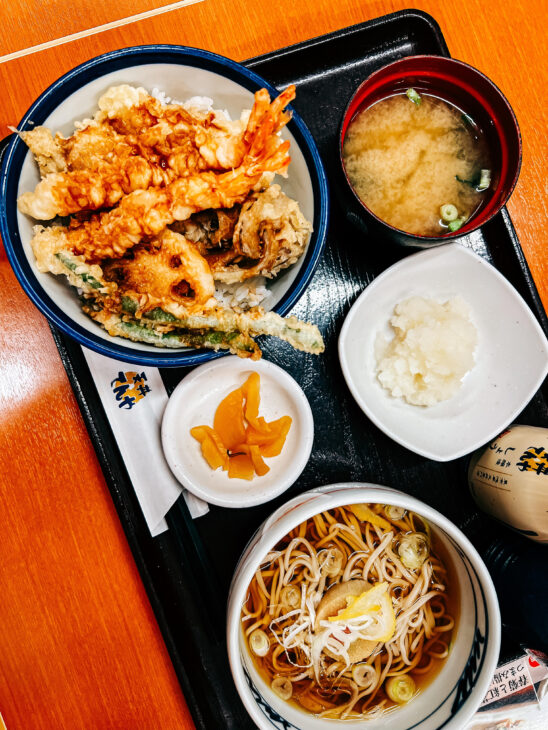
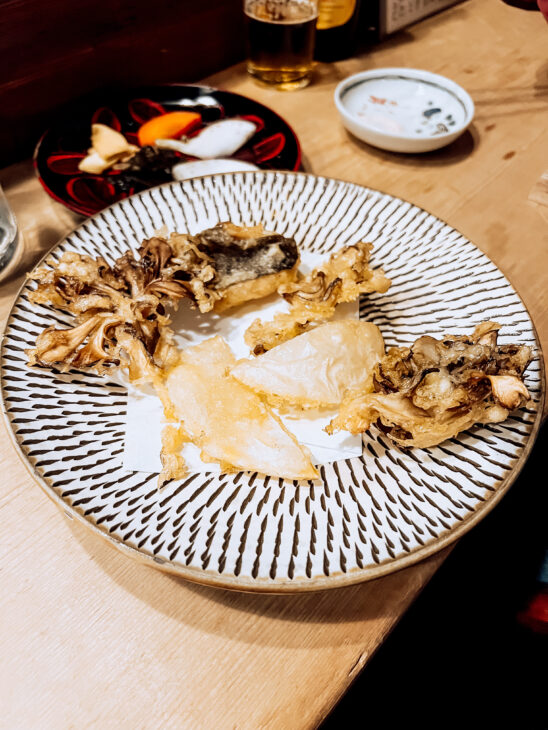
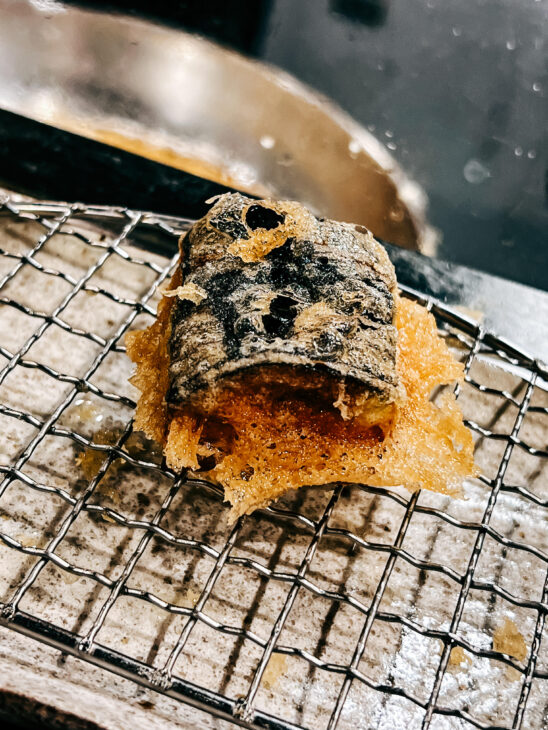

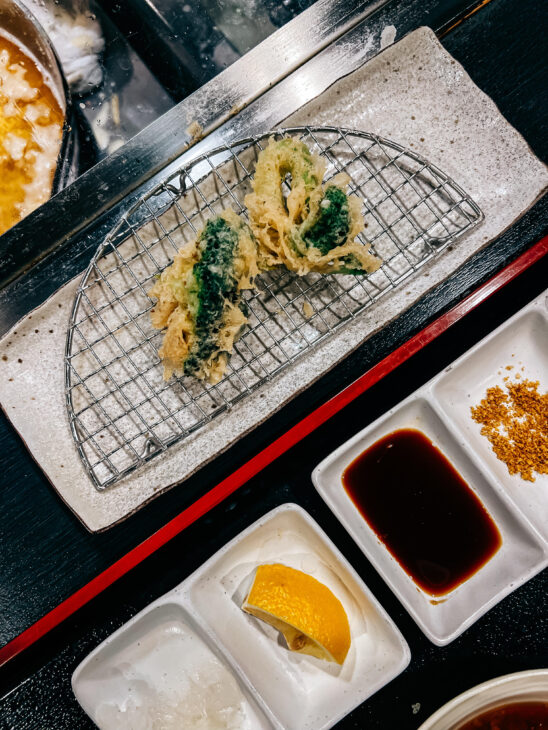
Okonomiyaki
Okonomiyaki is a savory pancake from Osaka, made from wheat flour mixed with cabbage and other ingredients eg. seafood, meat, or a mix of both. It’s served with toppings: mayonnaise, seaweed powder, and bonito flakes.
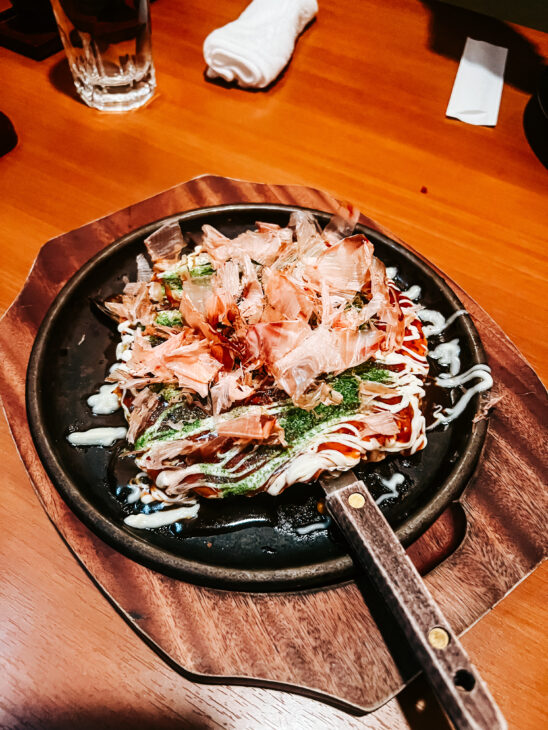
Takoyaki
Takoyaki are ball-shaped, fired cakes usually with octopus and it’s also Osaka’s iconic dish.
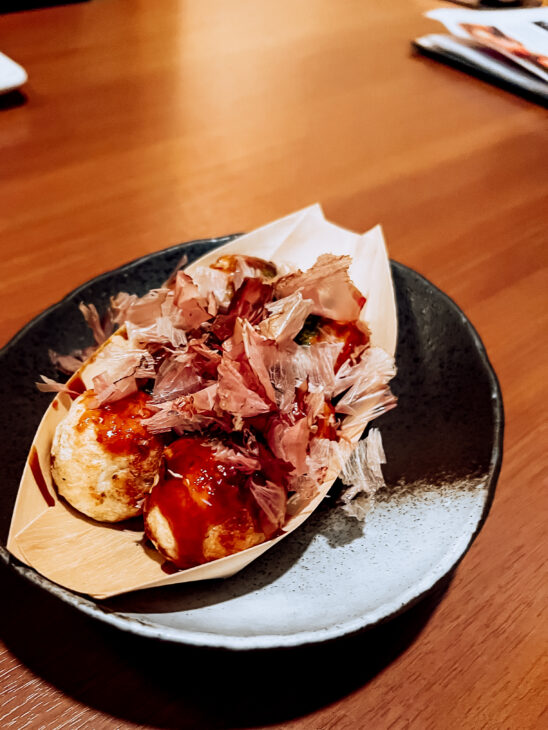
Onigiri
Onigiri is a small snack (shaped in a triangle or ball) made of rice, filled with eg salmon or tuna with mayo, and wrapped in nori.
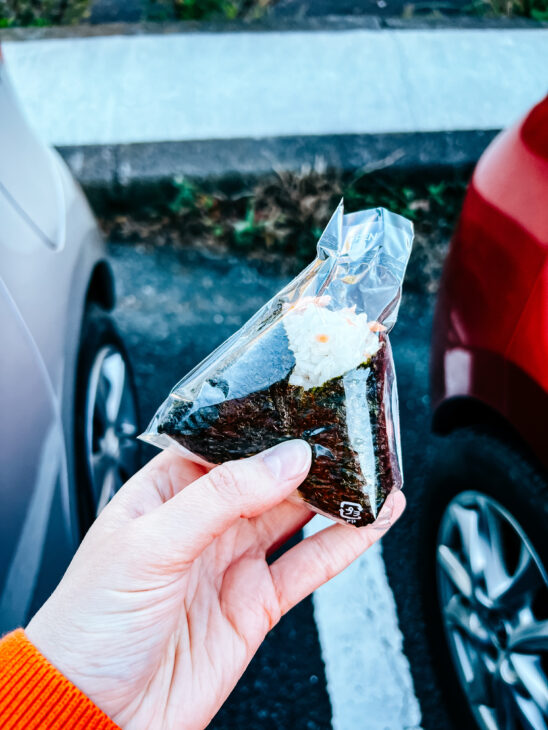
Tamagoyaki
It’s a sweet and savory rolled egg omelet seasoned with soy sauce, mirin, salt, and sugar. Served with sushi or as street food. I tried it on Tsukiji Market in Tokyo.
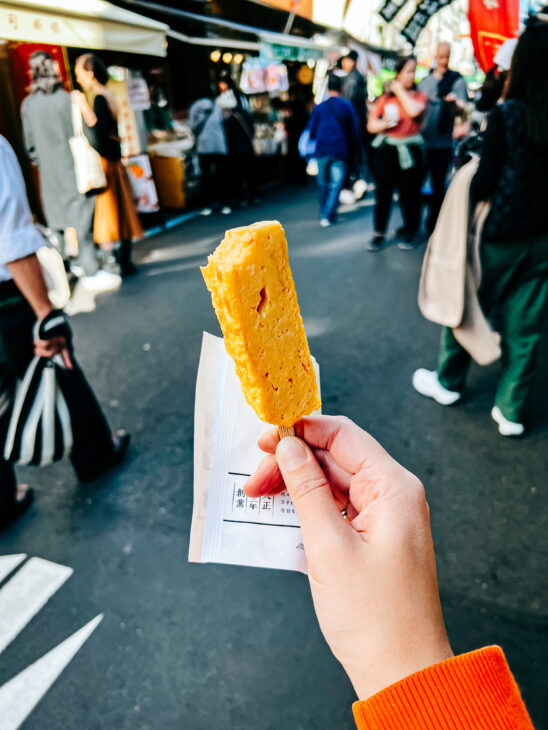
Tofu
Tofu is a staple of Japanese cuisine. It’s made from curdled soy milk, pressed into blocks. The most common types of tofu are silken, regular, firm, and extra firm. The silken tofu is often served as an appetizer seasoned with soy sauce, spring onions, and bonito flakes. It’s also served fried or as a common ingredient of miso soup.
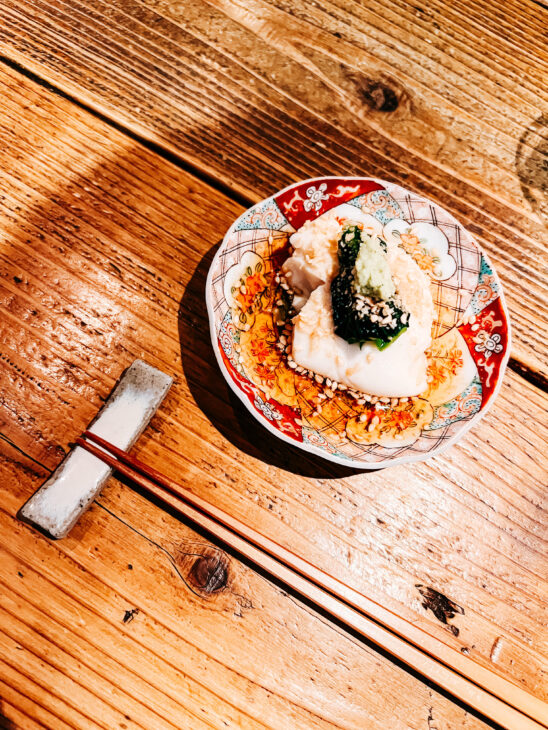
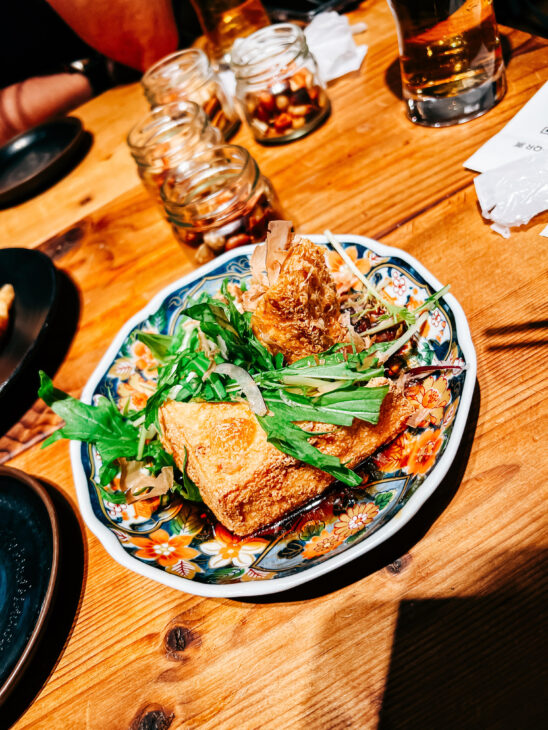
Natto
It’s cooked and fermented soybeans often served with rice as a breakfast food. I didn’t like it at first, but it grew on me. In Osaka, I ate a surprising version of a spring roll filled with natto.

Pickles
Pickles are very common in Japan, known collectively as tsukemono are served as a side dish. Also often served in izakayas, sushi restaurants, or at food markets. The most common are salted pickles made from radish (daikon), eggplant, cucumber, seaweed, or other seasonal vegetables.
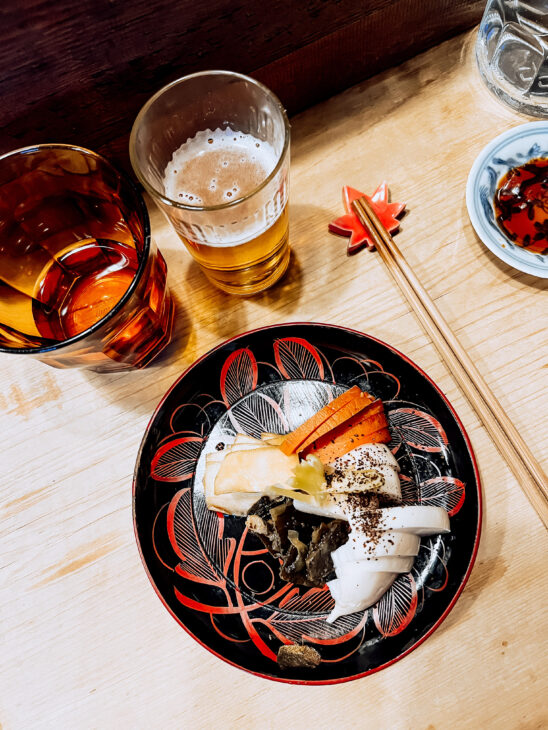
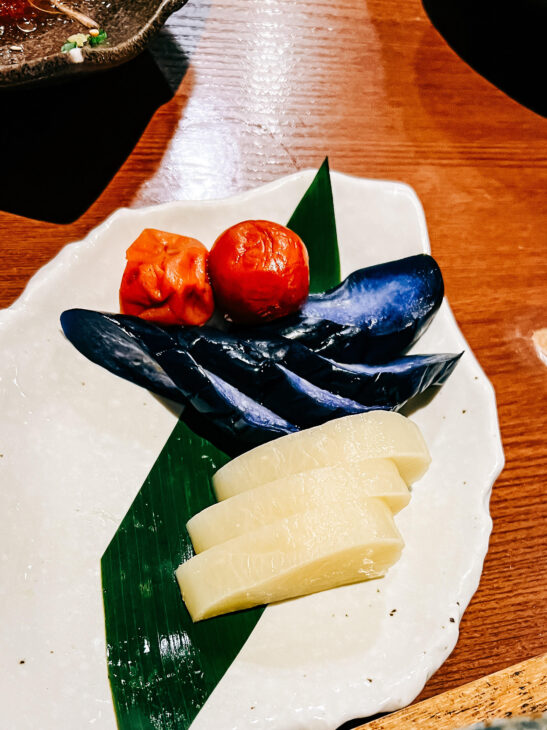
Potato salad
This came as a surprise to me, as it’s associated with German cuisine. In Poland, we’re big on similar vegetable salads too. The potato salad is often served in izakayas. Creamy, more mashed, and equally delicious.
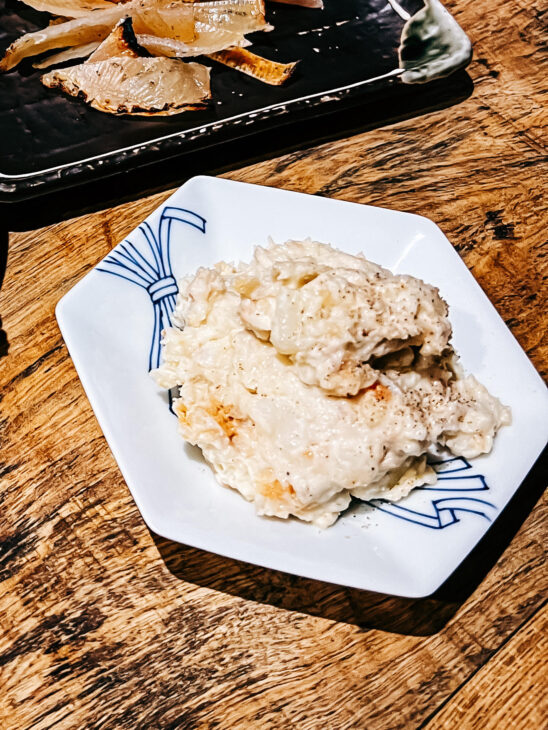
Katsu fried meat/fish
Katsu is fried, coated in breadcrumbs cutlet commonly made from pork or chicken, so as a pescatarian, I didn’t have much hope to try it. But in one of Osaka’s izakaya, we tried delicious katsu mackerel.
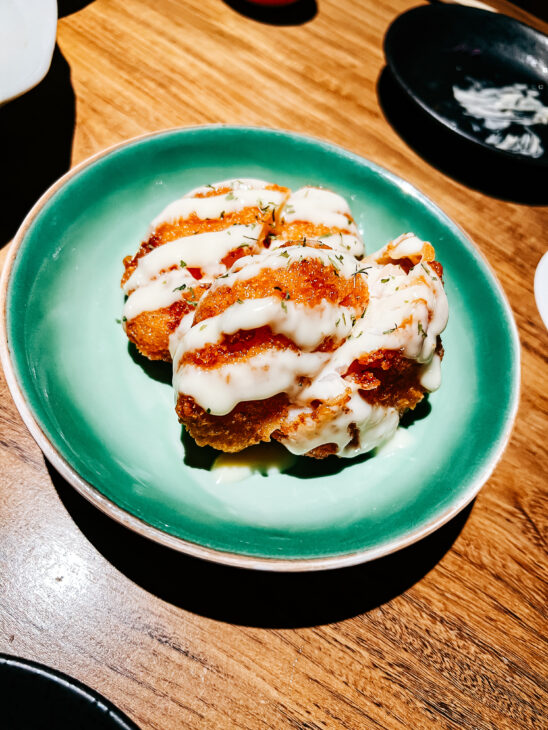
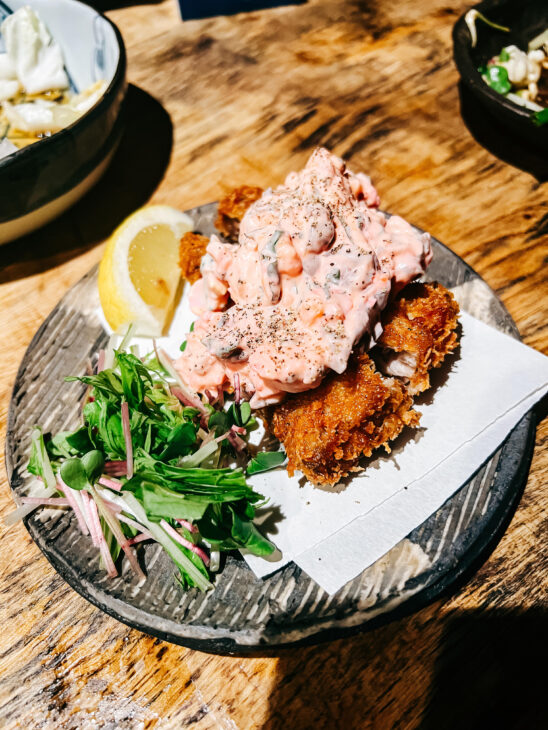
Wagyu beef
Although I don’t eat meat, Japanese wagyu beef is worth mentioning. It’s the most expensive meat in the world, known for its rich marbling and thin lines of fat, which melt in lower temperatures than regular beef, which makes them soft and buttery. The wagyu beef is also served raw.
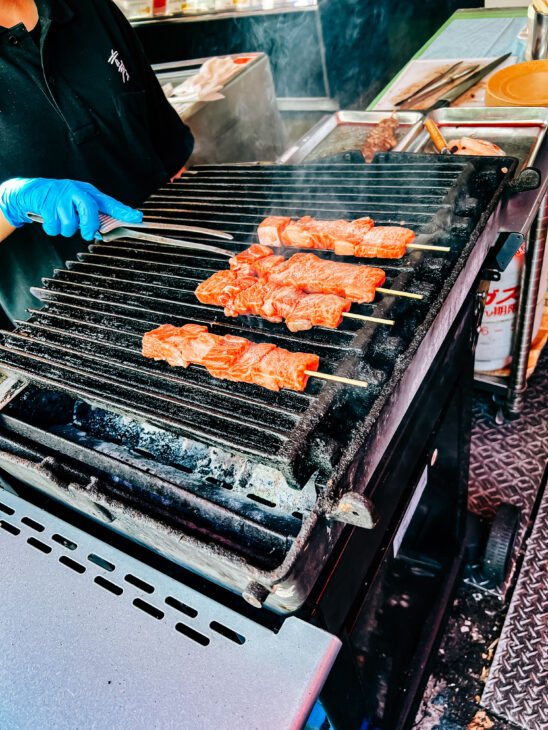
Desserts to try in Japan
Taiyaki
It’s a sweet fish-shaped cake filled with bean paste, or we also encounter chocolate or custard options.
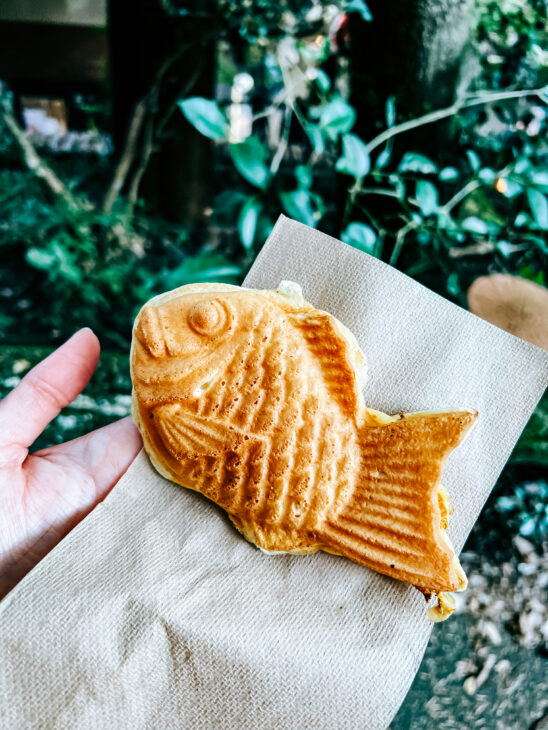
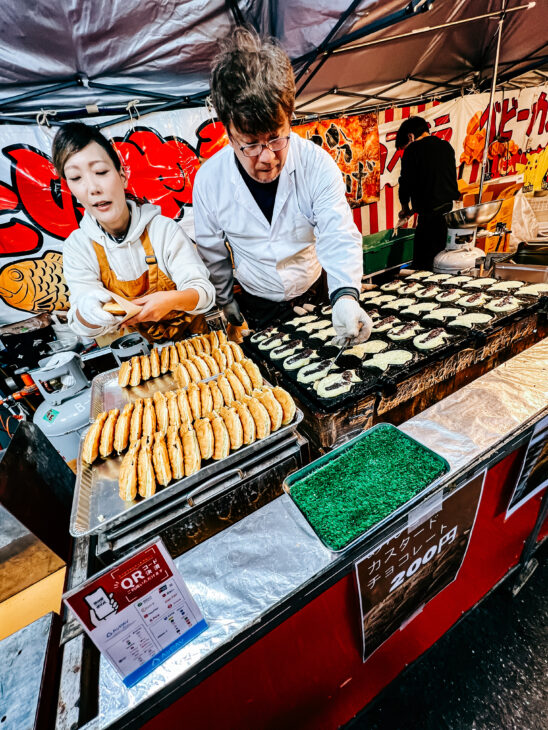
Mochi
Mochi is a traditional Japanese dessert made of rice. We ate the famous, viral mochi from Nakatanidou in Nara. It was a delicious soft, chewy bun filled with sweet bean paste and covered in soybean powder. We were lucky, as we didn’t need to wait too long in the line.
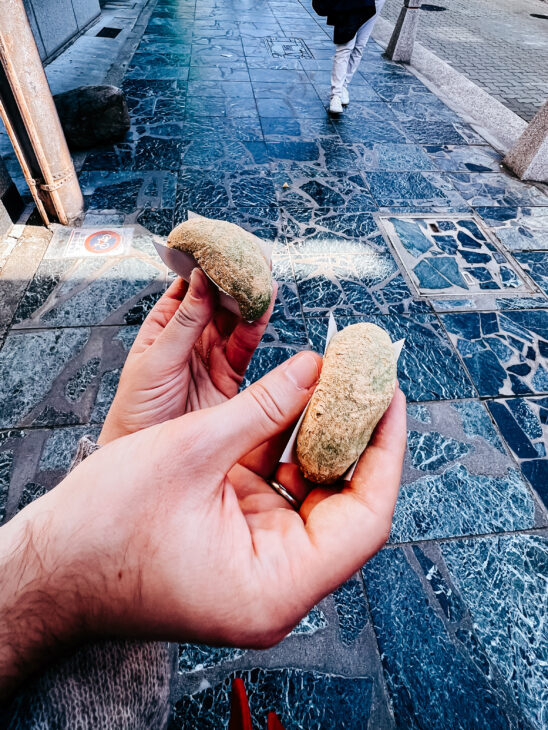
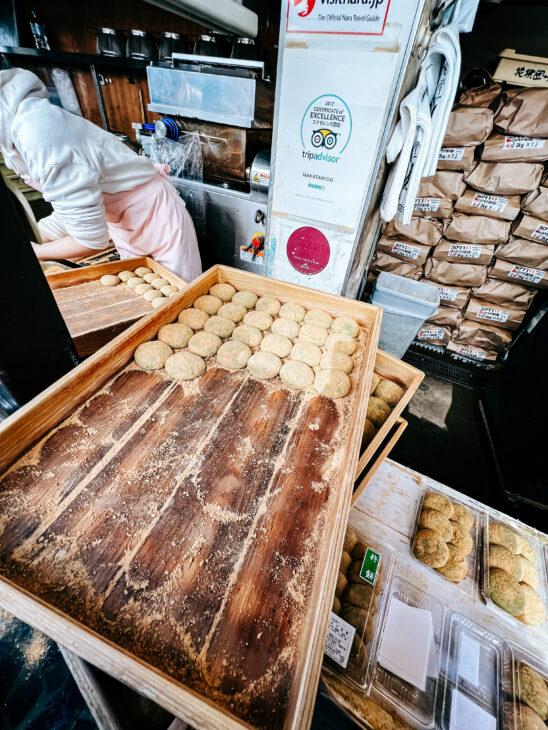
Adzuki bean paste (Anko)
This sweet paste is often used for pastries, mochi, and other sweets, but it’s also often served for breakfast with a buttery bun.
Oshiruko (Zenzai)
This very traditional dessert served is adzuki bean soup served with rice cakes.
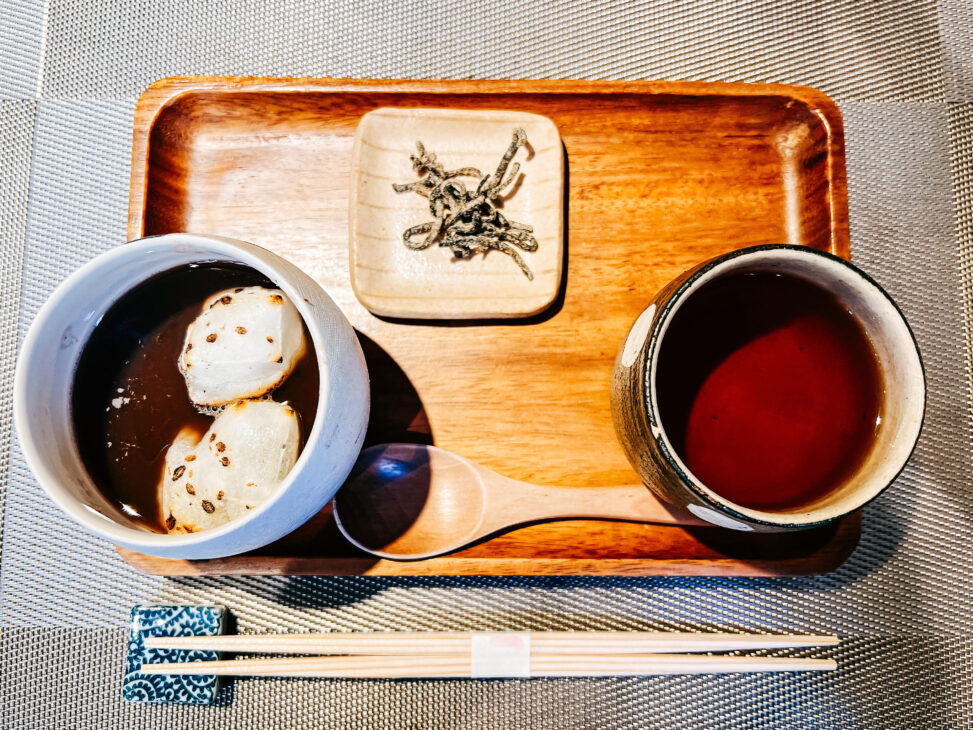
Yatsuhashi
Yatsuhashi is Kyoto’s typical souvenir—rice flour sweets filled with bean paste. In Honke Nishio Yatsuhashi Kiyomizuzaka shop close to Kiyomizu Dera temple you can find various flavors, eg. matcha, cinnamon, or black sesame.
Ice creams
Japan is a place like no other for those who love unique ice cream flavors. Apart from more traditional black sesame, matcha, sweet potato, or kinako (roasted soybean powder) flavors. There is also a huge variety of savory choices like miso, soy sauce, crab, or squid ink, which can rarely be found in Europe.
Drinks to try in Japan
Sake
It’s an alcoholic beverage (13-17% alcohol) made of fermented rice. It can be served cold or hot. We visited the Gekkeikan Okura Sake Museum to learn the sake history and did some tasting. Although sake is not my thing, I respect hundreds of years of tradition and its special place in Japanese culture.
Amazake
It’s a traditional sweet non-alcoholic or low-alcoholic drink made of fermented rice. Served chilled in summer and hot on the colder days. Try it with freshly grated ginger for extra flavor.
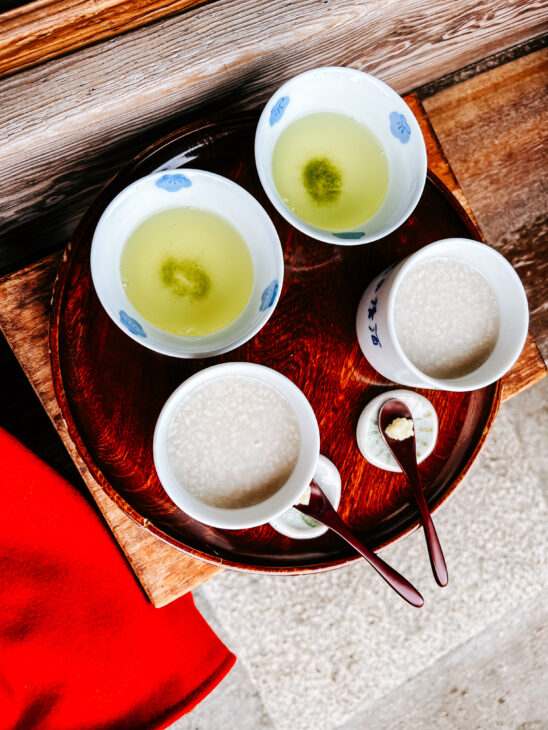
Matcha
Powdered green tea, is made from a grinder full tea leaves. It can be simply served as a soft drink with your lunch or be prepared as the ceremony or served in desserts. Although I don’t understand the phenomenon of matcha, I love it in desserts like matcha-flavored cakes and mochi. Worth trying in Kyoto or in the modern, beautifully designed place: The Matcha Tokyo.
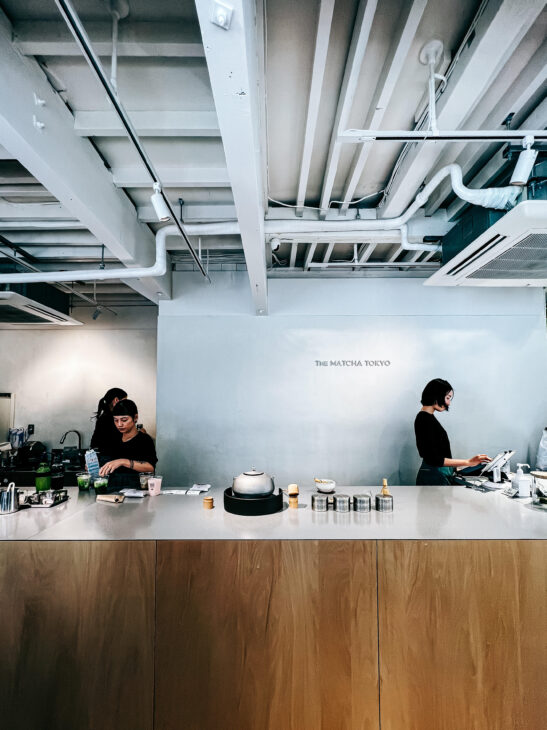
Barley tea
It’s tea made of roasted barley grains served chilled or hot. It has a toasty, bitter-sweet flavor, so not everyone likes it. But it’s worth trying.
Yuzu soda
Yuzu is a traditional small citrus fruit that has been used to season various meals since the old times. And it’s also used in drinks. The soda is nicely refreshing, close to lemon, but different.




